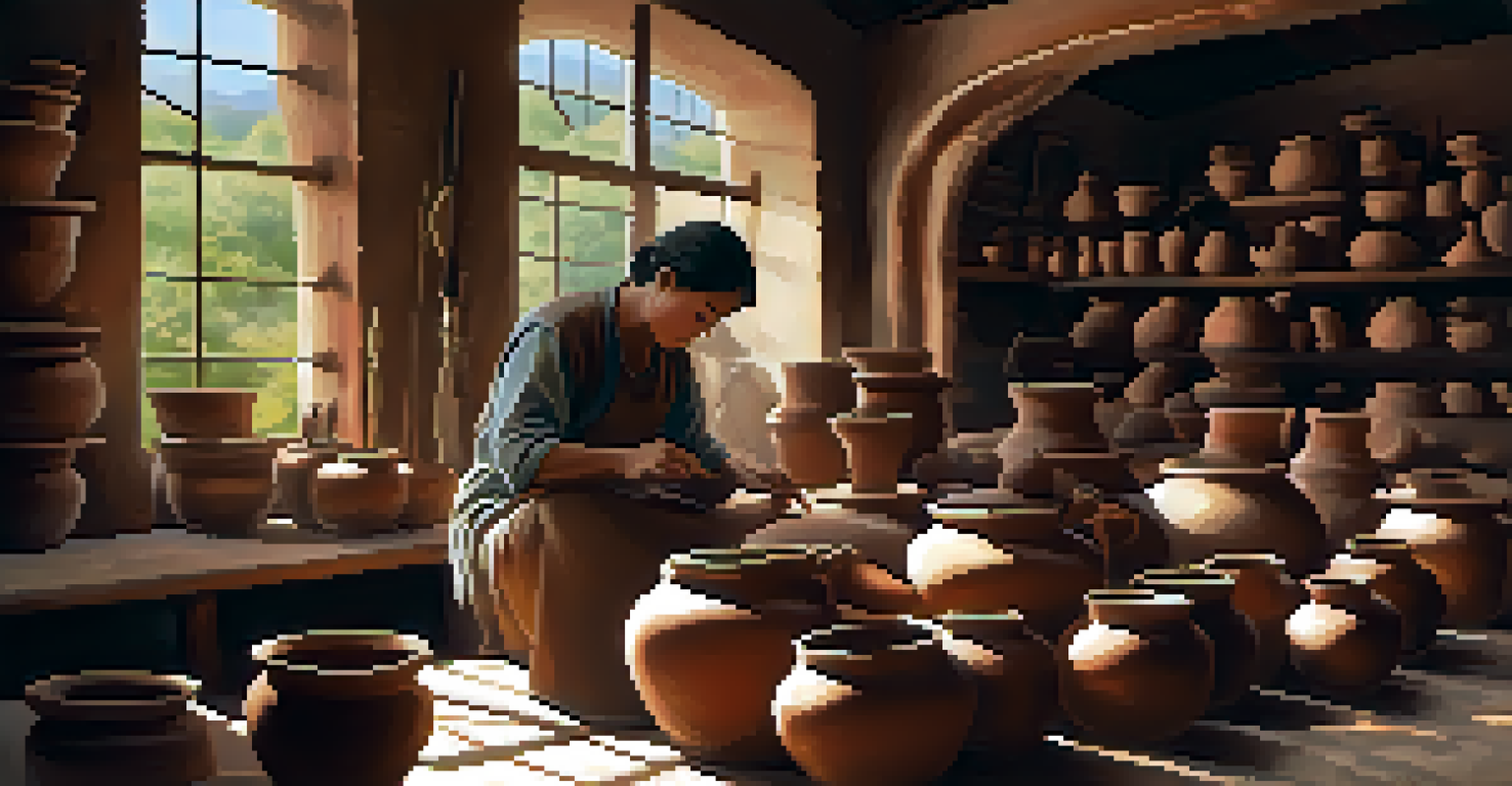Experiencing Local Cultures at UNESCO World Heritage Sites

Understanding UNESCO World Heritage Sites
UNESCO World Heritage Sites are recognized for their cultural, historical, and natural significance. These sites are not just tourist attractions; they are protected areas that tell the story of humanity's heritage. By visiting these sites, travelers can engage with the stories and traditions of the local communities.
Traveling – it leaves you speechless, then turns you into a storyteller.
The UNESCO designation helps preserve these sites for future generations, ensuring that their cultural importance is recognized worldwide. Each site has its unique narrative, reflecting the values and beliefs of the people who have lived there for centuries. Understanding this context enriches the visitor experience, allowing deeper connections with the local culture.
Whether it's the ancient ruins of Pompeii or the stunning landscapes of Machu Picchu, UNESCO sites offer a glimpse into the past, inviting visitors to appreciate the artistry and craftsmanship of different cultures. By exploring these locations, travelers become part of an ongoing dialogue about history, identity, and preservation.
The Charm of Local Traditions and Festivals
Visiting UNESCO World Heritage Sites often coincides with local festivals that celebrate cultural heritage. For instance, the vibrant Carnival in Venice, which takes place in the historic city, showcases traditional masks and costumes deeply rooted in the local culture. Participating in these festivities allows travelers to experience the culture in an authentic way.

These events not only provide entertainment but also serve as a platform for locals to share their customs and stories. From traditional dances to culinary showcases, festivals breathe life into the heritage of the site. Engaging with locals during these celebrations creates lasting memories and fosters a sense of community.
Cultural Significance of Heritage Sites
UNESCO World Heritage Sites are vital for preserving cultural narratives and fostering connections between visitors and local communities.
Moreover, these traditions often highlight the importance of preservation, as communities rally to maintain their cultural practices. When tourists participate, they contribute to the economy and encourage the ongoing celebration of these unique heritages, creating a symbiotic relationship between visitors and locals.
Culinary Experiences: Taste the Culture
One of the most delicious ways to experience local culture at UNESCO sites is through food. Each region boasts its culinary traditions, often linked to its history and landscape. For instance, sampling the paella in Valencia or indulging in the street food of Marrakech allows visitors to taste the essence of the place.
The journey not the arrival matters.
Food also serves as a storytelling medium, where every dish has a tale to tell about the ingredients, preparation methods, and cultural significance. Local markets near UNESCO sites often provide a feast for the senses, filled with vibrant colors and enticing aromas. Engaging with local chefs or participating in cooking classes can enhance this culinary journey.
By savoring local dishes, travelers not only enjoy a meal but also connect with the cultural narratives intertwined with those flavors. This interaction promotes appreciation for the region's agricultural practices and culinary heritage, making every bite a celebration of local identity.
Art and Craftsmanship: A Window into Tradition
Art and craftsmanship are integral aspects of local cultures found at UNESCO World Heritage Sites. Whether it's the intricate pottery of the ancient Pueblo in the American Southwest or the detailed woodwork in traditional Balinese homes, each piece reflects the community's identity and history. Visitors can often witness artisans at work, providing insight into their techniques and inspirations.
Many sites offer workshops or guided tours that allow tourists to try their hand at traditional crafts. This hands-on experience deepens appreciation for the skills passed down through generations. Engaging in these activities not only supports local artists but also fosters a greater understanding of the cultural significance behind the art.
Engagement Through Local Festivals
Participating in local traditions and festivals enhances the travel experience and promotes authentic cultural exchange.
Moreover, purchasing locally made crafts helps sustain the economy and encourages the preservation of these traditional skills. By investing in local art, travelers become ambassadors of culture, sharing these stories and crafts with their own communities long after their visit.
Engaging with Local Communities
Connecting with local communities is one of the most rewarding aspects of visiting UNESCO World Heritage Sites. Many sites have programs designed to facilitate interactions between visitors and locals, offering opportunities to learn about daily life and cultural practices. These connections help break down barriers and foster mutual understanding.
For instance, participating in community-led tours allows travelers to hear firsthand stories about the site's significance from those who have lived there. This engagement enriches the travel experience and promotes sustainable tourism practices that benefit local residents. It’s about building relationships rather than just ticking off a list of attractions.
Additionally, such interactions can lead to lasting friendships and a deeper appreciation for the complexities of different cultures. By prioritizing local engagement, travelers contribute to preserving cultural heritage and empowering communities to share their narratives with the world.
The Role of Sustainable Tourism
Sustainable tourism plays a critical role in preserving UNESCO World Heritage Sites and their surrounding cultures. As travelers become more conscious of their impact, there is a growing emphasis on eco-friendly practices that protect these irreplaceable sites. This includes supporting local businesses, minimizing waste, and respecting cultural norms.
Sustainable tourism not only benefits the environment but also ensures that local communities thrive economically. When tourists prioritize experiences that benefit locals, such as guided tours led by community members or staying at locally-owned accommodations, they help sustain the cultural landscape. This approach fosters a more authentic and enriching travel experience.
Sustainable Tourism Benefits Everyone
Embracing sustainable tourism practices helps protect heritage sites while supporting local economies and communities.
By embracing sustainable practices, travelers can enjoy the beauty and history of UNESCO sites while ensuring future generations can do the same. It’s about creating a cycle of respect and appreciation that honors the cultural significance of these locations.
Reflections on Cultural Exchange and Growth
Experiencing local cultures at UNESCO World Heritage Sites is more than just sightseeing; it's an opportunity for cultural exchange and personal growth. Travelers often return home with newfound perspectives and a deeper understanding of global diversity. This exchange enriches both visitors and hosts, broadening horizons and fostering empathy.
Every UNESCO site visited becomes a chapter in the story of one's journey, filled with lessons learned and memories created. Engaging with different cultures challenges preconceived notions and encourages a more inclusive worldview. This transformative aspect of travel is what makes it so rewarding.

Ultimately, the experiences gained at these sites highlight the importance of preserving cultural heritage for future generations. By sharing stories and insights from their travels, visitors contribute to a greater narrative about humanity's interconnectedness and the beauty of diverse cultures.